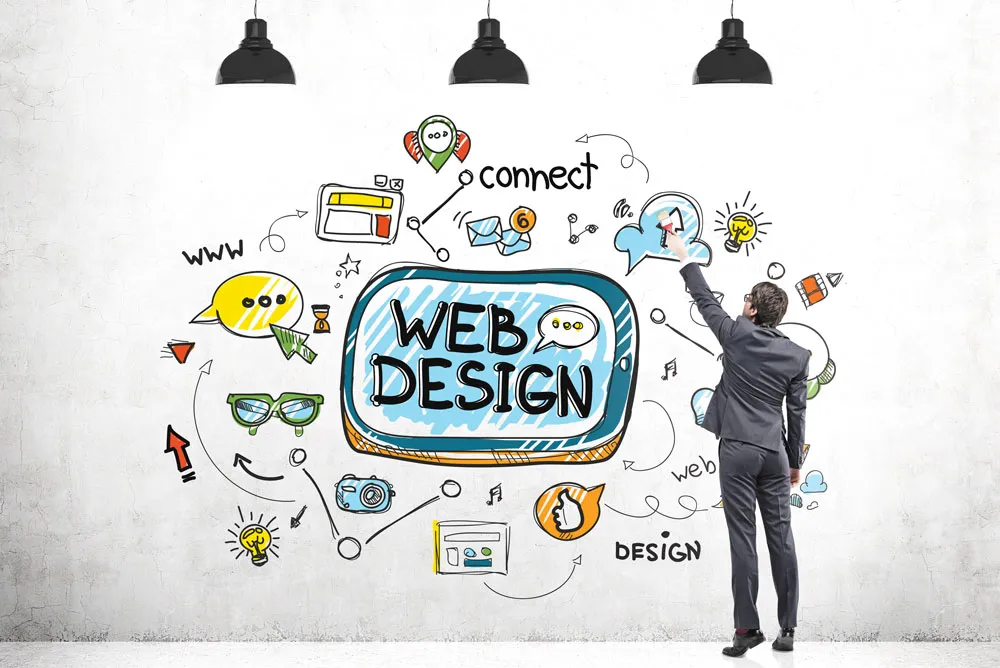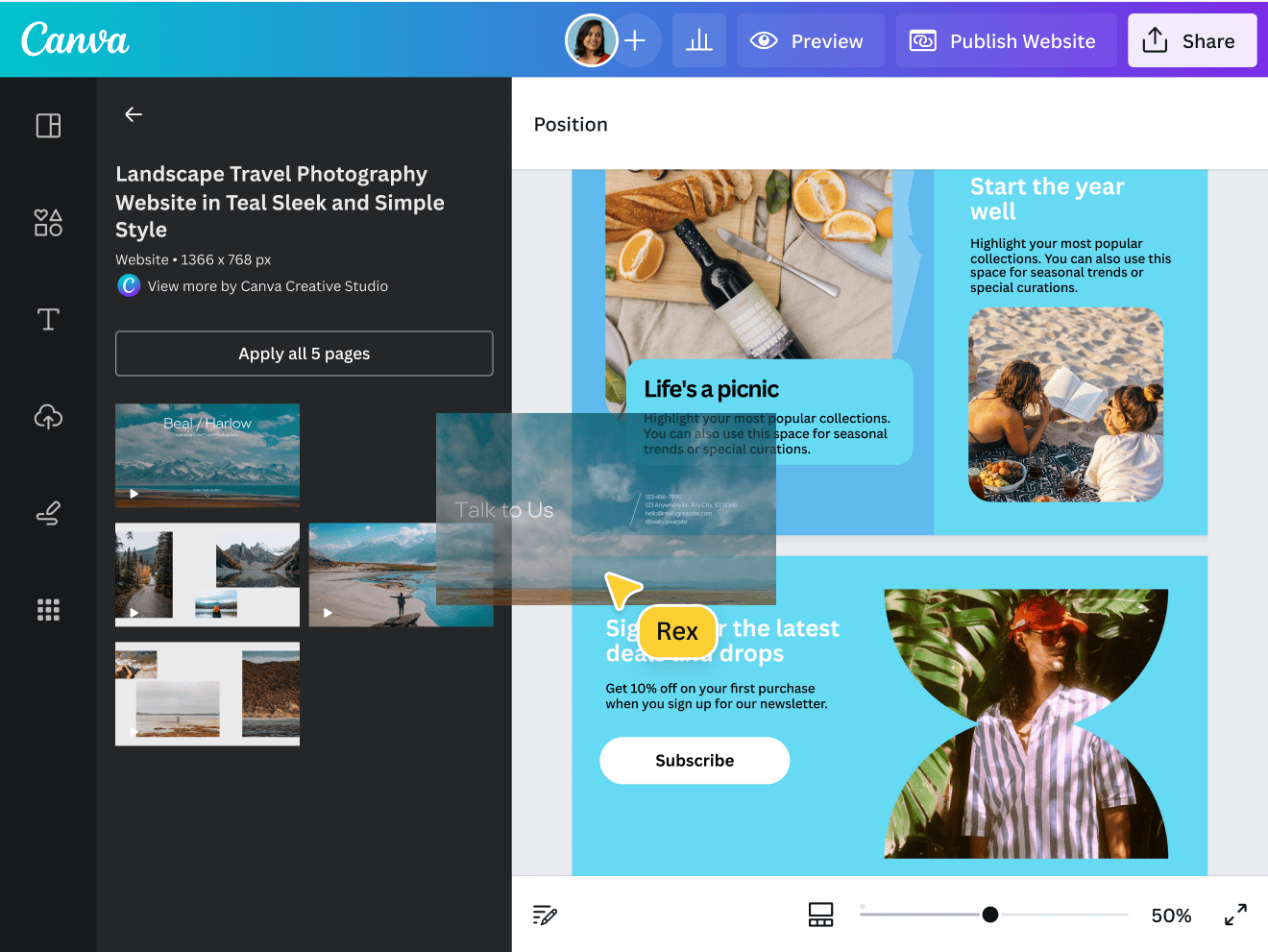Browsing the Digital Landscape with Professional Web Design Philippines Services
Browsing the Digital Landscape with Professional Web Design Philippines Services
Blog Article
User-Friendly Website Design for Seamless Online Experiences
The journey towards attaining seamless on the internet experiences involves browsing an intricate interplay of style aspects and customer expectations. Comprehending these subtleties elevates critical concerns about the future of internet layout and its role in shaping individual interactions.
Relevance of User-Friendly Design
Straightforward layout is critical in today's digital landscape, as it constantly boosts individual experience and contentment. In an era where users have many options at their fingertips, an internet site that prioritizes user-friendly style sticks out by effectively satisfying the demands of its target market. This style method not just improves availability however additionally promotes involvement, making sure that visitors can browse the site easily and locate the info they seek without stress.
Additionally, user-friendly style plays a significant role in establishing depend on and trustworthiness. They are more most likely to view the brand favorably when individuals run into a efficient and intuitive user interface. This perception can cause enhanced consumer loyalty and higher conversion prices, as users are a lot more inclined to return to a site that provides a smooth experience.
In addition, a concentrate on easy to use design can reduce bounce prices, as site visitors are much less most likely to leave the site if they locate it very easy to utilize. Web Design Philippines. By focusing on individual requirements, businesses can produce an efficient on-line visibility that drives success and fosters long-term partnerships with customers. In recap, straightforward layout is indispensable not only for individual satisfaction however likewise for attaining broader organization goals
Key Concepts of Usability
Emphasizing quality and simplicity, the vital principles of use offer as fundamental components in developing reliable web styles. These principles make certain that individuals can engage with a web site with ease, bring about a more rewarding user experience.
One essential concept is uniformity. A regular user interface permits individuals to predict end results based upon previous communications, lowering confusion and improving navigation. Efficient feedback systems are vital; individuals ought to get prompt actions to their activities, such as confirmation messages or mistake informs, which guide them with their jobs.
An additional crucial concept is availability. A usable design ought to accommodate customers of differing abilities and atmospheres, guaranteeing that every person can involve and access with the web content seamlessly. This includes making use of understandable fonts, appropriate shade contrasts, and alternative text for pictures.

Navigating and Framework
Effective navigating and structure are critical components of any effective internet design, as they straight affect just how individuals find and communicate with content. An efficient web site enables individuals to locate info promptly, promoting a favorable experience that motivates them to remain longer and involve more deeply.
To accomplish efficient navigating, developers ought to focus on quality and simpleness. This can be achieved via the use of instinctive menu structures, plainly identified classifications, and a conveniently accessible search function. Consistency across pages is equally vital, as it enables customers to form a mental map of the site, reducing cognitive tons and boosting usability.
In addition, including breadcrumbs supplies users with context about their place within the site, allowing them to browse back to previous sections easily.
A rational hierarchy is crucial when structuring material, with main visit here subjects plainly displayed and additional info embedded appropriately. This technique not only aids navigating but additionally sustains SEO efforts by plainly specifying the partnership in between various material elements. Ultimately, a thoughtful navigating and structure style enhances individual fulfillment, promoting seamless on-line experiences that fulfill users' requirements successfully.
Responsive Layout Techniques
Just how can web designers ensure that their websites supply an optimal experience throughout a range of gadgets? The answer depends on utilizing receptive style techniques. These methods allow internet sites to adapt seamlessly to various screen dimensions and alignments, making certain performance and visual appeals continue to be intact.
One basic method is using fluid grids, which entail developing formats that use loved one systems like percentages as opposed to dealt with pixels. This versatility permits elements to resize proportionally, fitting any kind of screen. In addition, media inquiries play an essential function in receptive design, allowing the application of specific CSS styles based on gadget characteristics such as width and resolution (Web Design Philippines). By defining breakpoints, designers can customize the appearance of material to boost usability.
One more effective method is applying receptive pictures that immediately readjust their dimension according to the gadget, optimizing loading times and keeping high quality. Additionally, mobile-first design motivates the creation of websites with a primary concentrate on mobile customers, gradually enhancing attributes for larger displays.
Integrating these responsive design techniques ensures that sites not only accommodate diverse devices yet also deliver a rewarding and constant customer experience, ultimately adding to the success of an on-line existence.
Enhancing User Interaction
While a well-designed web site can bring in visitors, boosting customer interaction is vital for retaining their interest and encouraging communication. Involving individuals needs a complex method that prioritizes instinctive style, relevant web content, and interactive functions.
First, a clear and easy to use navigating framework is crucial. Site visitors must quickly find what they're looking for additional info without unneeded clicks. Executing breadcrumbs, search bars, and sensible categorization can dramatically boost navigation.
2nd, vibrant web content plays an essential role in maintaining individuals involved. Normal updates, post, and individualized referrals based on user habits can promote a feeling of link.
Incorporating interactive components such as quizzes, polls, and comment areas can likewise improve engagement by inviting users to take part actively. Utilizing visual storytelling with infographics and videos can catch interest and convey messages more efficiently than message alone.
Finally, optimizing filling speed and making sure mobile responsiveness are essential components in keeping user rate of interest. A smooth experience throughout devices avoids stress and motivates users to explore better.
Conclusion
To conclude, user-friendly website design is essential for making certain seamless on-line experiences that improve user satisfaction and involvement. By sticking to essential concepts of functionality, implementing instinctive navigating, and employing receptive design methods, sites can significantly enhance user interaction. Moreover, a concentrate on clearness and availability cultivates count on and credibility, eventually driving customer commitment and adding to company success. Focusing on these style components lays the structure for a favorable and enduring partnership in between customers and digital platforms.

In conclusion, easy to use internet layout is pivotal for ensuring smooth on-line experiences that boost customer complete satisfaction and involvement.
Report this page